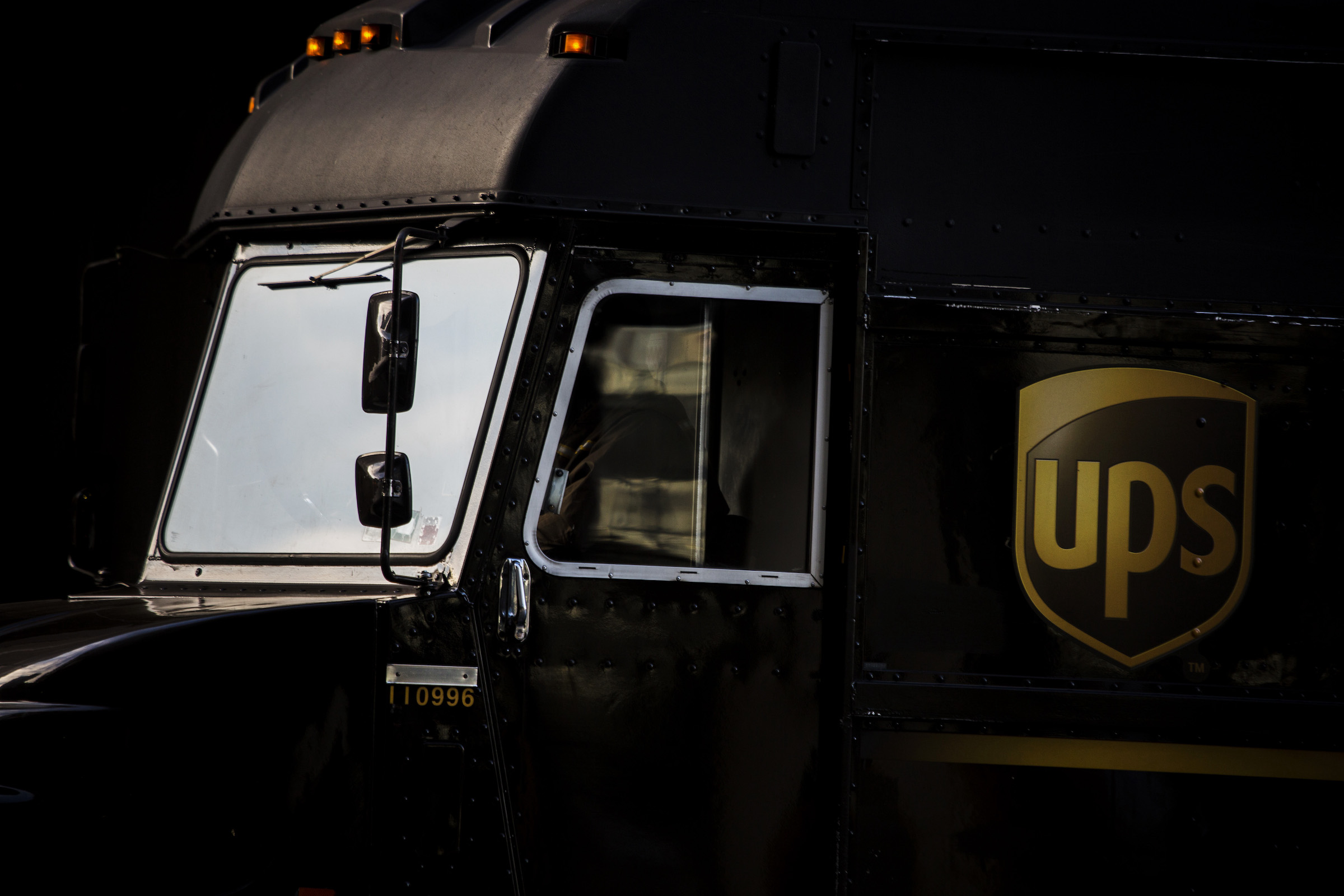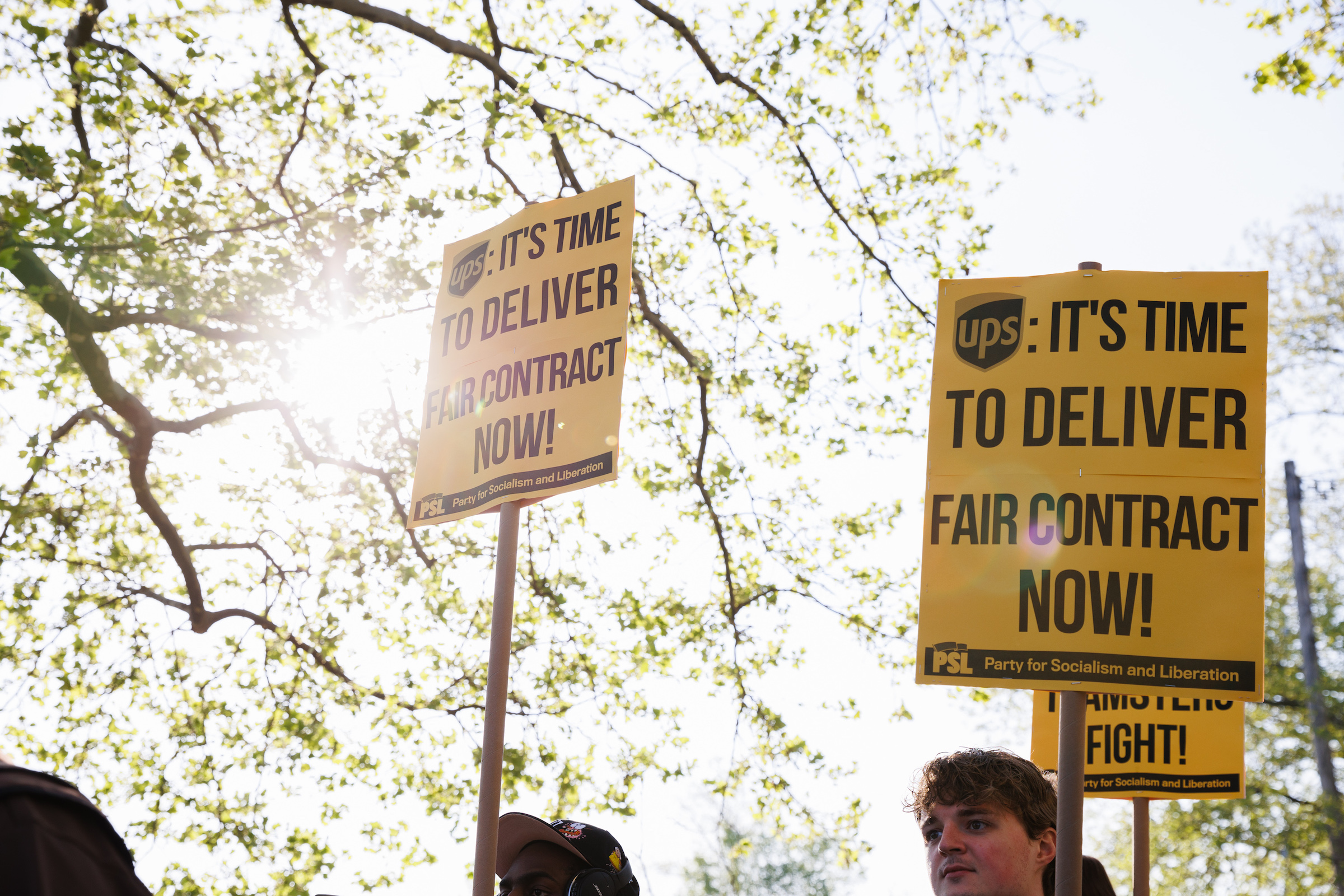
This story was supported by the Pulitzer Center.
These days, UPS driver Barkley Wimpee prepares for his daily route out of Rome, Ga., with the precision of a battlefield commander. He loads up his cooler with ice, and stocks it with sandwiches, a case of water bottles, and a couple of sports drinks. He girds himself with a bandana and some plastic bags: around midday, when the sun is at its height, he will soak the bandana in ice water and wrap it around his head, Rambo style—UPS’s strict appearance rules notwithstanding.
Midafternoon, when the day’s accumulated heat blasts out of the back of his non-air conditioned delivery truck like an oven with the door open, he will take off his shoes, slip his feet into the plastic bags and plunge them into the puddling ice of his cooler for a few moments of respite. On really bad days, he will dunk his head in as well. He has surveyed his route’s restaurants, and he already knows which ones will welcome him with a blast of air conditioning and a glass of ice water—by the time he gets there, he has already downed all his drinks, and his cooler’s contents will have become a tepid soup.

Working all day in heat like this, he says from behind the wheel of his truck on a recent 100°F morning, “is physically painful. When your body starts to heat up, you don’t feel right.” As weeks-long, triple-digit heat waves smother the southern U.S. from California to Florida, not feeling right is starting to feel normal for Wimpee, 28. And it’s only going to get worse. “There’s no question that the globe is heating up,” he says. “Summers are getting hotter. Our [work] days are getting longer. I’m thankful that I have a job, but it’s an untenable situation that we’re in right now with the rising heat.”
More from TIME
Wimpee is not alone. Across the U.S., UPS drivers are braving one of the most immediate aspects of climate change: longer, more intense heat waves that make working long hours in wheeled ovens not just uncomfortable, but dangerous. Last summer, Wimpee succumbed to heat stroke midway through his route. He spent the night in the hospital, where he was diagnosed with severe kidney injury caused by heat. On June 25, 2022, Esteban Chavez, 24, died of suspected heat stroke while delivering packages in Pasadena, Calif., on a day that saw temperatures in the high 90s. A few weeks later another UPS driver collapsed on a customer’s doorstep in Arizona when the temperature hit 110°F. More than 143 UPS employees have been hospitalized for heat injuries between 2015 and 2022, according to company records submitted to the Occupational Safety and Health Administration obtained by the Washington Post. Still, UPS refused to air-condition their familiar dark brown trucks. Doing so, said company spokespeople, was impractical given that drivers were constantly jumping in and out of the vehicles to make their deliveries.
Read more: What Extreme Heat Does to the Human Body
On June 16, UPS’s 340,000 Teamsters union members voted to strike starting August 1, unless their demands for improved working conditions, including air-conditioned vehicles and company-provided ice for coolers at the cargo centers, were included in a new, five-year contract. While climate change was not specifically cited in the union demands, UPS’s unwillingness to adapt to the new realities of global warming by providing its employees with heat-adaptation strategies formed the subtext of the campaign.
Before contract negotiations collapsed on July 5, with both sides trading accusations that the other had walked away from the table, the company had tentatively agreed to equip all new vehicles in its 94,000-strong fleet with air conditioning systems, new heat shields, and additional fans, starting in 2024. While union members are still holding out for more breaks and shorter working days during high heat periods (shifts can last 10-12 hours, six days a week, depriving drivers of essential recovery time), it’s a good start, says Wimpee. “Hopefully, after these negotiations UPS will take the exposure to the heat seriously. And deal with it differently.” But if negotiations aren’t resumed immediately, the union will likely launch one of the largest strikes in U.S. history, putting millions of daily deliveries at risk starting next month.

Whatever happens with the strike, the new vehicles can’t come fast enough, says Larry McBride, a 46-year-old UPS driver based in Phoenix, Ariz., who was hospitalized last summer for heat stroke and severe kidney injury after a day delivering packages in 100°F weather. The biggest problem isn’t the cab, but the uninsulated cargo hold which, after a day absorbing heat from the sun, can reach up to 150°F. Drivers spend most of their time in those holds, shifting and selecting the packages they need for delivery. “Before you realize it you start getting disoriented, lightheaded, like you might pass out,” he says. “When you step outside, even if it’s 115° out, you will feel like you got blasted with AC because it’s so hot back there.”
Are you working outside in a heat wave? Tell us about it.
With more than half a million full- and part-time-workers, UPS is one of the biggest employers in the U.S.. While it was poised to be the first major American company to include climate-adaptation provisions in its employment contract (before the negotiations failed), it certainly won’t be the last. As the dangers of working outside increase, either because of heat waves, wildfires, or extreme weather, companies will have to provide better conditions for their employees, either by foresight, or force. In Palmdale, Calif., a 2022 heat wave triggered a union push among Amazon delivery drivers. In its latest contract with the United Farm Workers, California wine industry giant E. & J. Gallo just agreed to add hazard pay for grape pickers laboring through climate change-fueled wildfire conditions. Meanwhile, in Europe, the International Trade Union Confederation is proposing that heat stress be integrated in collective bargaining agreements while ensuring that unemployment benefits cover loss of working hours due to heat stress and floods.
Juanita Constible, the senior climate and health advocate at the Natural Resources Defense Council, sees these developments as a welcome correction to the notion that climate concerns are mainly an elite preoccupation. A just transition doesn’t just mean green jobs for workers pushed out of polluting industries, she says. It also means protecting those workers from the inevitable consequences of a warming world. “There are many groups that are trying to elevate the issue of worker safety in a climate change context. So I’m hopeful that as we see workers realizing their collective power, it will force a change.”
—With reporting by Sofi Gratas in Rome, Georgia
A version of this story also appears in the Climate is Everything newsletter. To sign up, click here.
More Must-Reads From TIME
- The 100 Most Influential People of 2024
- Coco Gauff Is Playing for Herself Now
- Scenes From Pro-Palestinian Encampments Across U.S. Universities
- 6 Compliments That Land Every Time
- If You're Dating Right Now , You're Brave: Column
- The AI That Could Heal a Divided Internet
- Fallout Is a Brilliant Model for the Future of Video Game Adaptations
- Want Weekly Recs on What to Watch, Read, and More? Sign Up for Worth Your Time
Contact us at letters@time.com